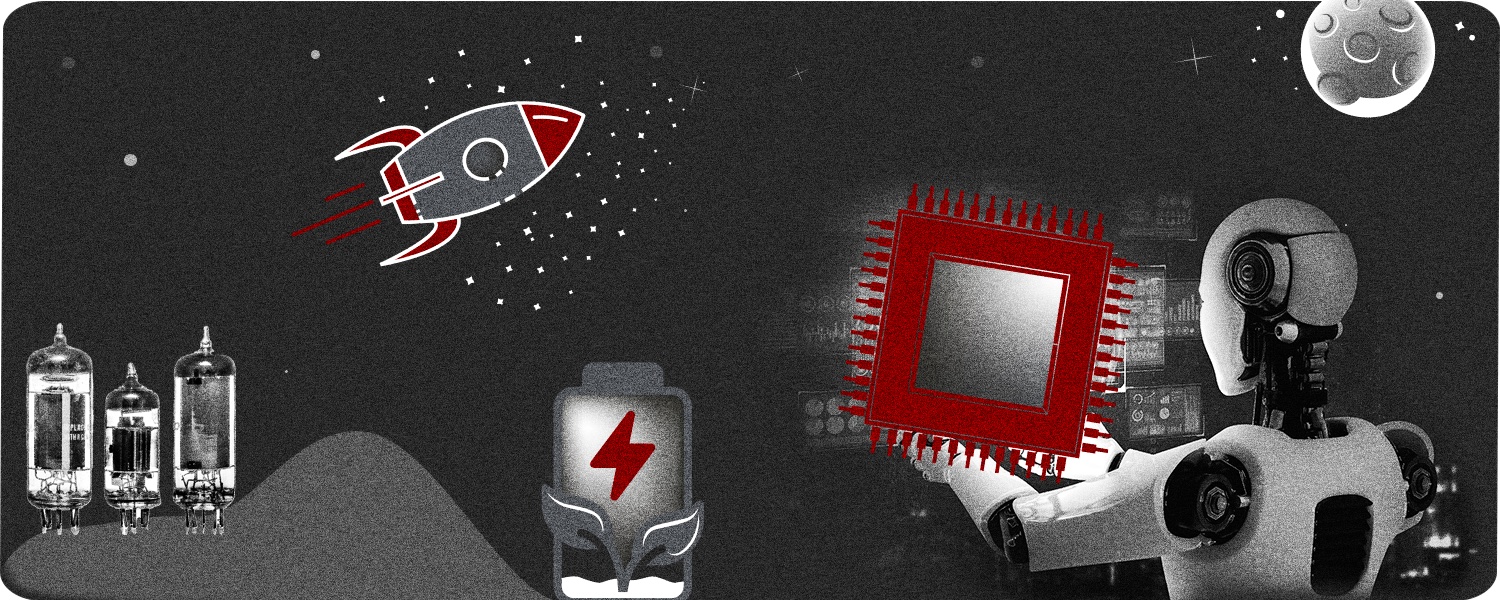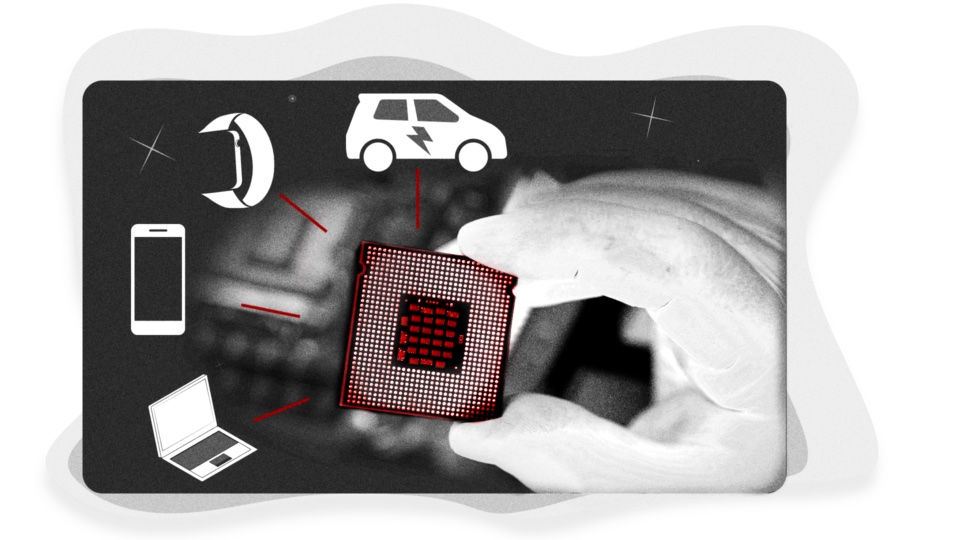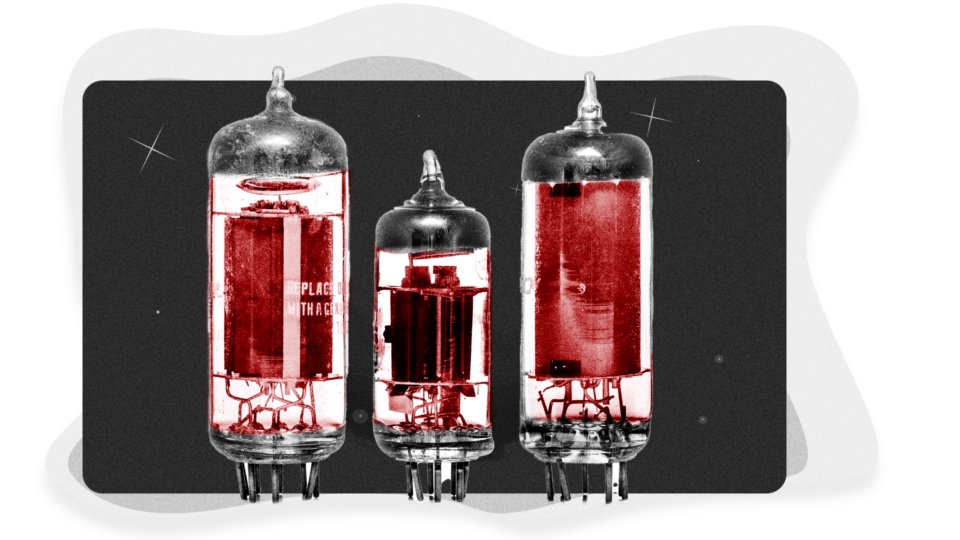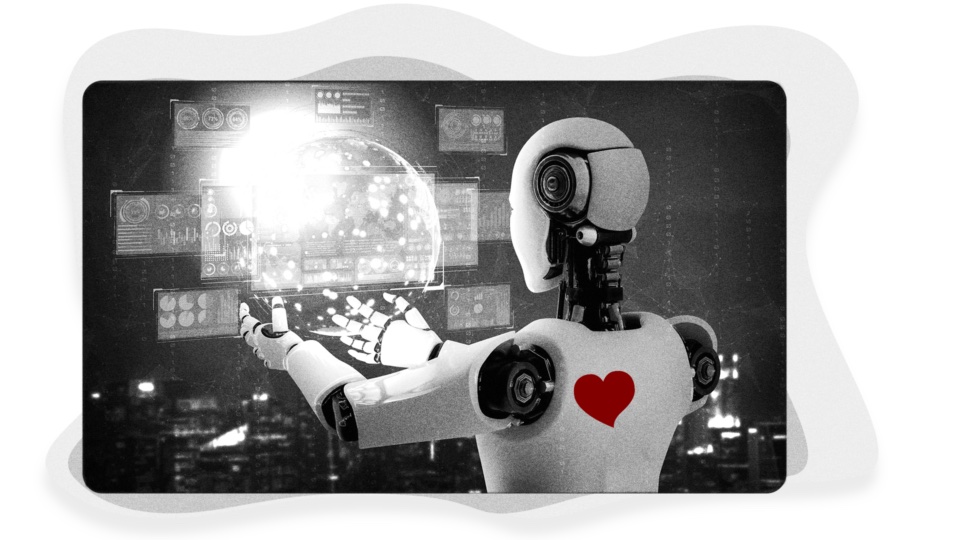

From engineering advances to medical applications to geopolitics, semiconductors are big news. And for good reason, says Stanford University semiconductor researcher, Srabanti Chowdhury. “Semiconductors are incredibly impactful in our life,” said Chowdhury, who is an associate professor of electrical engineering, materials science and engineering (by courtesy) and a senior fellow at the Precourt Institute for Energy. “We’re always among them, either using them directly or getting benefits from them.”
Chowdhury’s lab focuses on studying semiconductors that can support more efficient, sustainable, and heatproof electronics. On Sept. 11, the Semiconductor Research Corporation awarded Chowdhury the 2023 Technical Excellence Award, recognizing her expertise in semiconductors that are designed to withstand extreme heat environments and her prolific and transparent data sharing practices.
 Here are 14 questions Chowdhury answered [click on the question to jump to her answer]:
Here are 14 questions Chowdhury answered [click on the question to jump to her answer]:
- What is the definition of a “semiconductor”?
- Why are semiconductors important?
- What are the parts of a semiconductor?
- What materials are semiconductors made of?
- What do semiconductors have to do with computers?
- What is “Moore’s Law” and how does it relate to semiconductors?
- Why are there concerns about a semiconductor shortage?
- Why are semiconductors a topic in political news?
- What are the biggest challenges in semiconductor technology or production?
- What major advances in semiconductor technology are coming soon?
- What advances seem less likely in the near-term?
- What work from your group are you most excited about?
- What would say to someone considering studying semiconductors?
- What does the future of semiconductors look like?
1. What is the definition of a “semiconductor”?
Short answer: Semiconductors can conduct electricity in some situations but block it in others.
Chowdhury: A semiconductor is a chemical element or compound that conducts electricity under certain conditions and blocks it in other conditions. If you think of a metal, like a copper wire, and you think about electricity flowing through it, you cannot generally switch it off without taking away the source or supply – like using a wall switch to stop the flow of current through the wiring of your room into your light bulb. Copper will always conduct and wood will never conduct (because it’s an insulator). A semiconductor is something in between. You can make it conduct or block current by design!
[Back to the list of questions]
 2. Why are semiconductors important?
2. Why are semiconductors important?
Short answer: Any electronics that you see, hold, or touch all have a chip – or several chips – inside that is made out of semiconductors.
Chowdhury: We’re always among semiconductors. They are in your computer, your cell phone, your watch, your car, and even in LED lights. Semiconductors are so important because you cannot run your daily life without them. The smarter the world gets, the more the need for semiconductors will increase.
[Back to the list of questions]
3. What are the parts of a semiconductor?
Short answer: To a materials scientist, a semiconductor is a crystal with atoms and defects; to a physicist, it has a conduction band and valence band; and to an electrical engineer, it has electrons and holes.
Chowdhury: You can see semiconductors in the frame of energy, which typically device physicists do. They see two energy bands – a conduction band and a valence band – and a very important energy gap (aka bandgap) that separates the two. The bands are full of “rooms” for electrons, which are called states. In the conduction band, only some of the states are filled with electrons and the others remain empty, where the electrons can jump into. This is how a semiconductor conducts current. A valence band, which otherwise is full of electrons, has some empty states that are called “holes”. Holes are positive in charge and electrons are negative. They can combine to emit light or generate heat!
If you see through the lens of charges, like an electrical engineer, the current in a semiconductor is generally carried by electrons or holes, or both.
Last but not least, through the lens of a material scientist, we have lattices – a repeated geometrical pattern – of atoms that create a very crystalline structure. Sometimes you will have one or two atoms or more missing from a given set of lattices and those give vacancies, or defects.
[Back to the list of questions]
4. What materials are semiconductors made of?
Short answer: Semiconductors can be made of a single element or combination of elements in the form of a compound. Si is an elemental semiconductor and GaN is a compound semiconductor.
Chowdhury: Some elements are semiconductors by themselves, or they can be mixed with another element to become semiconductors. These are actually categorized as elemental and compound semiconductors. Silicon and diamond are elemental semiconductors. Gallium nitride, gallium arsenide, cadmium telluride, zinc oxide, molybdenum disulfide, and silicon carbide are compound semiconductors to name a few. The periodic table provides us with many permutations and combinations of elements to form a semiconductor.
[Back to the list of questions]
5. What do semiconductors have to do with computers?
Short answer: Transistors and diodes are the building blocks of circuits that go in a computer, and these are made out of semiconductors. Once upon a time transistors or diodes in computers were made out of vacuum tubes, but not since semiconductors emerged.
Chowdhury: Everything. No computer can function without the semiconductor (device) in it. All information in a computer is transmitted or stored in forms of binary digits – zeros and ones – and these zeros and ones are ‘voltages’ that are generated, transmitted and stored using little switches made out of transistors and diodes, and those are made of semiconductors. Powering up a computer to function also happens through semiconductor switches.
[Back to the list of questions]
6. What is Moore’s Law and how does it relate to semiconductors?
Short answer: Moore’s Law is an observation (not a law!) made by Gordon Earle Moore, the co-founder of Intel Corporation. In 1965, he observed, “The complexity for minimum component costs has increased at a rate of roughly a factor of two per year,” and that this trend should continue for 10 years or more.
Chowdhury: Moore’s Law is an observation; it’s a household name for semiconductor engineers and electrical engineers. In 1965, Gordon Moore, who at the time was working as the director of research and development at Fairchild, postulated that the number of components that can be packed onto a chip will double every two years – and this relates to semiconductors because these components are made of semiconductors. Moore’s Law is often used as an indicator of potential computing power.
Moore’s “prophecy” has been used by the semiconductor industry to guide long-term goals and to set roadmaps. Semiconductor component cost only goes down over time, not up. For performance and functionality, we pack more and more on a chip but cannot increase the price of it. So, Gordon Moore was trying to predict how it would stay profitable. Often I joke, that if the semiconductors folks had cut themselves some slack, Moore’s Law wouldn’t have come true.
[Back to the list of questions]
7. Why have there been concerns about a semiconductor shortage?
Short answer: Producing semiconductor chips involves access to fabrication plants, but the main piece of the puzzle is our workforce. In addition to issues like insufficient capacity at semiconductor fabs, the COVID-19 pandemic severely affected those people.
Chowdhury: Whenever supply falls short of the demand, you have a shortage. The shortage could be because of regional issues, like a drought in Taiwan – which reduces the availability of pure water needed to make semiconductors – or it could be something like what we’re seeing today, which was purely COVID-19-related. The workforce suffered significantly from the pandemic, and we are seeing the consequences still in the form of labor shortages. I think if robots were running the whole process, we probably wouldn’t see shortages anymore, but I hope that’s not coming soon.
[Back to the list of questions]
8. Why are semiconductors a topic in political news?
Short answer: Modern life is dependent on semiconductors – similar to our dependence on oil – and producing semiconductors is an international effort.
Chowdhury: Semiconductors are like an economic backbone of society. They are a measure of prosperity and advancement. Like other backbones – water or clean air or land or oil – it is a political entity because countries will defend their access to semiconductors. They do this, in part, because there is a responsibility towards their people and their prosperity. And, in some cases, you want to use your power to make sure your country is more advanced than others.
On top of that, we’re a very global economy and very interdependent. We don’t manufacture chips as much in the U.S. as we used to; we depend on other countries. Similarly, other countries depend on us for the research and development regarding chips. Basically, whenever countries try to control their stake in the process of creating semiconductors, it’s an international situation. And that is why you see semiconductors in political news.
[Back to the list of questions]
9. What are the biggest challenges in semiconductor technology or production?
Short answer: There is a lack of people going into semiconductor science, and we need to think more about sustainability.
Chowdhury: Number one is workforce. We are falling short of people who make semiconductors their career. The hardware side of things often tests your patience and doesn’t offer instant gratification. For example, Julius Lilienfeld patented the field-effect transistor in the 1920s, but no one could make it until around 1950. So, sometimes, you’re not even there to see your work realized and recognized.
The second one is industry-academia partnership (or lack thereof) to inspire students to solve real problems. The notion of academic semiconductor research being far out in time often turns off students who want to make a difference now. However, this is mostly untrue. There are many problems to choose from and you can always find those that matches your expectation. Career opportunities in semiconductors are also extensive and fulfilling and we are not saying it loud enough.
One other major challenge is sustainability. When it comes to helping our planet, semiconductors are part of the solution, but they can also be part of the problem. We are producing semiconductors and products with semiconductors at a fast pace, and we have catching up to do in terms of our thinking about sustainability.
[Back to the list of questions]
10. What major advances in semiconductor technology are coming soon?
Short answer: Some of the biggest advancements that are coming are adding an emotional piece to AI, remote access to high-quality medical care, and energy security being tied to semiconductors.
Chowdhury: Artificial intelligence is one of the biggest revolutions of our time. We are adding AI into electronics and making them smart. We are also trying to introduce emotions in them, and trying to build robots that are like you and me. That is tough because human brains are extremely complicated systems to model. We cannot yet make robots – or should I say the chips needed for such robots – that are as efficient as human beings, but we are moving in that direction.
I am also very intrigued by what will happen in clinical and non-clinical medical applications. In some parts of the world where there isn’t access to a good surgeon, 6G could enable a surgeon from somewhere else to control surgical instruments remotely with extreme precision. Right now, with 5G, I think the latency is a few milliseconds, which is very small but may not be little enough for intricate operations like a life-saving surgery done remotely. If we can do those kinds of things, the world will benefit from expertise from anywhere.
Another thing that is very interesting is energy security, which currently comes from oil. I think energy security will significantly come to depend on semiconductors because of dependence on renewables – to convert that energy from one form to another, you need semiconductors.
[Back to the list of questions]
11. What advances seem less likely in the near term?
Short answer: I don’t think we’ll be replacing silicon as the basis of computer chips.
Chowdhury: An idea you hear often is replacing silicon or making a non-silicon computer. That’s not happening. Our entire concept of modern computers is based on silicon and silicon continues to surprise us in a very good way.
At the same time, the silicon industry is increasingly open to welcoming new semiconductors to complement silicon, and that is the key. Theoretically, we should be able to make silicon more efficient by adding non-silicon semiconductors to do stuff that silicon cannot do. For example, my group works on diamond for thermal benefits that now we are mixing with silicon on chips to make it function better with more thermal management. Oxides, Nitrides, 1D, 2D – all these semiconductors can be carefully mixed (called “heterogenous integration”) to make the overall performance go up. But it is not trivial and will take time.
[Back to the list of questions]
12. What work from your group are you most excited about?
Short answer: We’re working on developing solutions based on semiconductors that lead to more efficient performance and allow energy to be more sustainable and accessible.
We work on developing materials, and make devices with them, while often adding stretch goals to demonstrate their potential in an application with our collaborators.
Chowdhury: My group works on wide bandgap materials, which are best thought of as materials that can give you 10-100 times the power density of silicon. They can also handle harsher environment, like high temperature, where they don’t fail when silicon does. One of our specialties is “power electronics” – all the AC-to-DC power conversions required to get power from the grid to your home or into your favorite electric vehicle rely on semiconductors. If power goes through oil refineries, you need semiconductors that can adjust to very high pressure and geothermal temperatures. Electronics in space also need very rugged semiconductors that can handle radiation, the cosmic rays. What we’re doing is we’re bringing in wide bandgap materials along with silicon, and to get more power out of less silicon. It is extremely important to offer more power density to make things compact and efficient at the same time.
We also work on radio-frequency (RF) electronics for 5G, 6G, and beyond. One of the biggest challenges in electronics right now is managing temperature. This is a necessity in computation and in RF applications, which include radar. We are studying a novel approach of integrating thin film diamond, which is a semiconductor, at the material level to help spread more heat and reduce temperature spikes in the chip. If you can spread the heat out, you can avoid some degradation of the performance. It helps chips operate more reliably and live longer.
[Back to the list of questions]
13. What would say to someone considering studying semiconductors?
Short answer: I believe this is a thriving industry and it’s becoming increasingly interdisciplinary, which is compelling. But I encourage people to decide for themselves how they feel about what is happening in semiconductors by spending enough time with the topic. It’s ok to take your time to decide, rather than rushing.
Chowdhury: There are some people worried that semiconductors are done advancing. So, I just want to say that no matter what they read or what they hear, they should explore the situation for themselves. I teach my group and undergrads to be curious and to not worry about imposing on anyone by asking questions. It’s so important for them to get a true picture of what is happening in their chosen field.
This is what I see: If you look at the big tech companies, all of them have their own semiconductor efforts in their backyard. They’re developing and researching semiconductors on site. So, jobs are very attractive in semiconductor engineering. Also, people don’t always realize that semiconductors is a very interdisciplinary topic. It has chemistry in it and physics and engineering, and you can apply it to your favorite domain: energy, sustainability, medical or biological applications. In the case of my group, heterogenous integration – that careful mixing of materials – to offer more efficiency to electronics compels us to explore new materials and devices.
[Back to the list of questions]
14. What does the future of semiconductors look like?
Short answer: I’m very optimistic and excited about the future because we have made the tent much bigger with interdisciplinary research, and we have the opportunity to benefit people worldwide.
Chowdhury: I’m not the only person who would say this: we have never felt so excited about semiconductors as we are today. And there are two main reasons for that.
For one, our industry is accepting that silicon, alone, is not enough. We’re used to silicon and we know everything about it. We feel more free to explore different and new materials for logic, memory, power conversion, thermal management, and more. What used to be a “silicon community” has broadened. We’re collaborating, we’re talking, we’re criticizing, and all of these are an indicator of a very healthy society.
A more general point: As we look to the future, it’s important to me, personally, that the benefits of semiconductors are accessible to the world as a whole. A great example is the Nobel Prize in physics in 2014, which was given for “the invention of efficient blue light-emitting diodes [LEDs] which has enabled bright and energy-saving white light sources.” That was one of the most engineering-centric Nobel Prizes and it recognized beautiful work that changed how humankind advances in a way that’s accessible everywhere. In the most optimistic future, our work can have a deep societal impact. The closer we get to those applications, the more exciting our industry will be.
[Back to the list of questions]
Engineering professor explains semiconductors - by Taylor Kubota with art by Farrin Abbott - Stanford News - September 20, 2023


